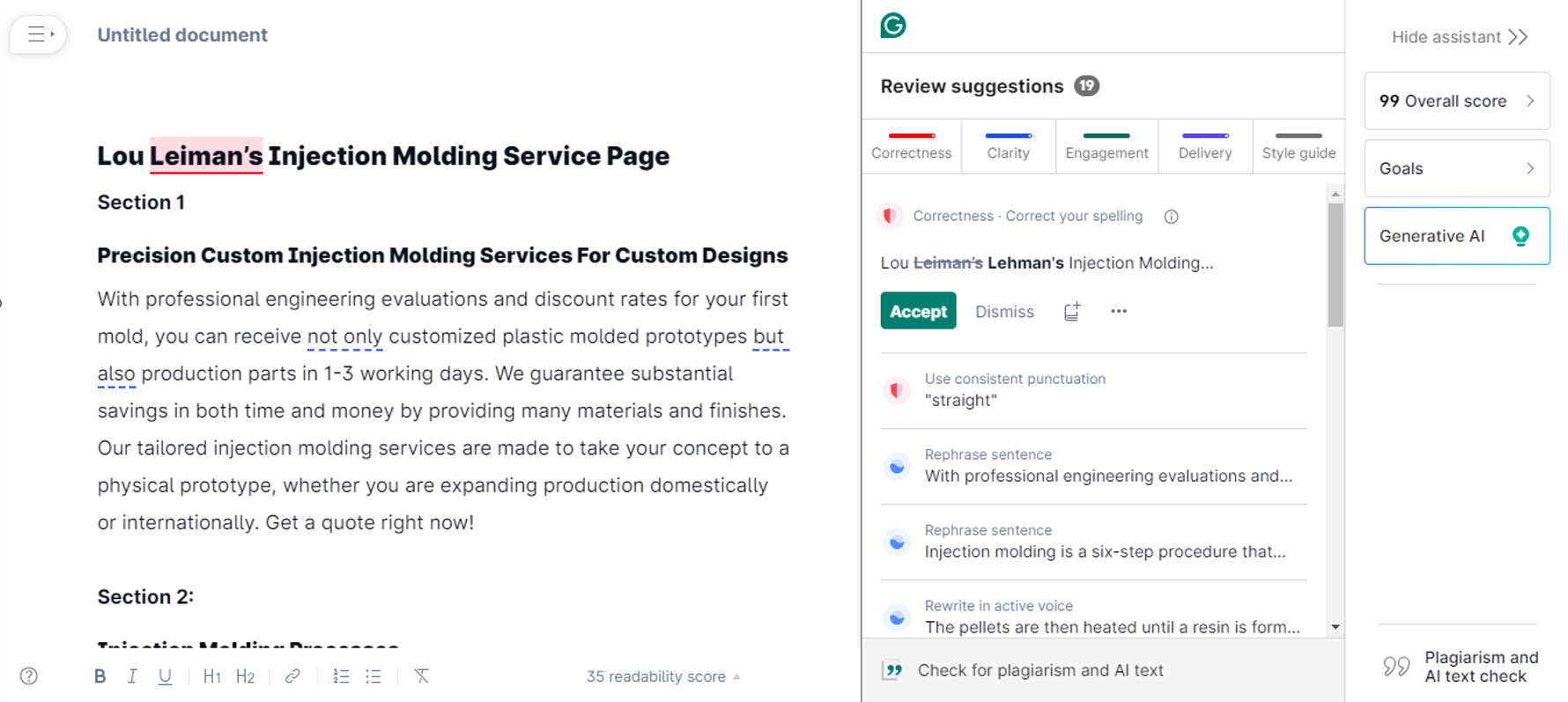Yes, Premium Parts provides fast prototyping services to support the development process. This vital step allows you to test and validate your designs successfully before committing to large-scale production.


Yes, Premium Parts provides fast prototyping services to support the development process. This vital step allows you to test and validate your designs successfully before committing to large-scale production.

Yes, you can supply.
The mold’s complexity and design, the production volume, the choice of materials, the object’s size, and the precision required all affect how much our injection molding service costs. The cost of a custom mold can range from a few thousand to tens of thousands of dollars, and the price per unit usually decreases with increasing manufacturing volumes. Pricing is also affected by the kind of plastic or resin used and fast orders that must be completed more quickly. Share the specifics of your project with us for an accurate and thorough quote, and we will work with you to find a solution that fits your goals and budget.
Injection molding service providers employ various techniques for an extensive spectrum of uses. The following are some typical kinds of injection molding procedures:
The size, intricacy of the design, and specifications of the product all affect the cycle of the injection molding process. With state-of-the-art injection molding equipment, the production of molded parts normally takes a few seconds to two minutes. But compared to simple parts, complicated parts require a longer cycle time. Furthermore, the intricacy of the finishing and assembling procedure affects how long the manufacturing process takes.
Tolerance is one factor that is carefully considered during the injection molding process. However, there is no set tolerance range for molded items. The only factors that matter are the part size, geometric complexity, and mold design. The standard tolerance range for common molded parts is as follows:
| Parts Types | Tolerance (Inches) |
| Simple Injection Molded Parts | +/- 0.001 to 0.003 |
| Geometrically Complex Parts | +/- 0.005 to 0.01 |
| Large molded parts | +/- 0.01 to 0.02 |
Agriculture
Irrigation components ● Equipment housings ● Seed planting trays
Packaging
Food containers ● Plastic bottles ● Sealing caps
Automotive and Transportation
Dashboard components ● Engine parts ● Interior trim pieces
Toys
Action figures ● Puzzle pieces ● Educational toys
Medical and Dental
Surgical instruments ● Prosthetics ● Dental trays
Aerospace
Structural components ● Cable harnesses ● Insulating materials
Energy
Solar panel mounts ● Wind turbine components ● Insulation systems
Robotics
Robotic arms ● Sensor housings ● Gears and couplings
Electronics
Circuit board enclosures ● Connectors ● Keypad buttons
Industrial
Machine guards ● Conveyor parts ● Control panel housings
Both techniques make molds to manufacture parts. In plastic injection mold, you incorporate melted plastic and inject it into mold to make the final shape. In metal injection molding, a mixture of a binder and fine metal powder is used. This mixture is injected into a mold. Then we remove the binder and heat the metal until it becomes solid.
The lead time of molds depends on the complex features of the mold design, size, and manufacturing process.
Please read on, stay posted, subscribe, and we welcome you to tell us what you think.